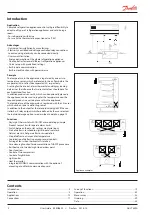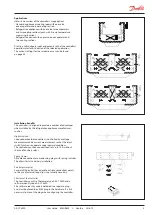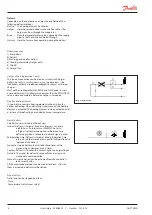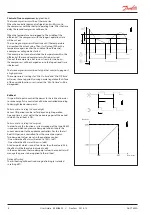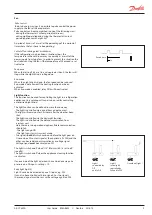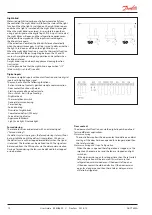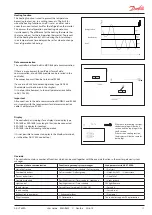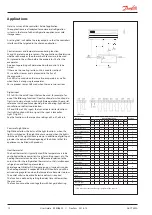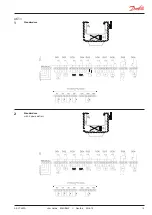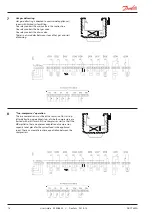
4
User
Guide RS8GR602 © Danfoss 2016-10
AK-CT
450A
Operation
Cooling
Regulation can be performed on the basis of the following princi-
ples:
Direct expansion
The temperature is controlled either through the starting/stop-
ping of a compressor or through the opening/closing of a sole-
noid valve in the liquid line.
Brine
Here, the temperature is controlled by opening/closing a solenoid
valve/motor valve in the brine supply.
Temperature control
The temperature in the appliance is registered by one or two
temperature sensors which are located in the air flow before the
evaporator (S3) or after the evaporator (S4) respectively. A setting
for the thermostat, alarm thermostat and display reading deter-
mines how much the two sensor values should influence each
individual function, e.g. 50% will produce an equal value from
both sensors.
Various weightings can be set for day and night operation.
The actual temperature control can take place in two ways: as an
ordinary ON/OFF regulation with a differential, or as a modulat-
ing control where the temperature variation will not be nearly as
great as in ON/OFF control. There is however a limit to the use of
a modulating control as it can only be used in DX central plant or
brine system.
In principle, regulation in this system is the same as described
above, but is now performed with a PI function. This results in
reduced fluctuation of the regulated air temperature with stable
loads, giving a more constant air humidity.
The function gives a constant temperature regulation with a tem-
perature value, which lies half-way between the on and off values
of the thermostat.
The operating parameters of the PI regulation are automatically
optimised via the preset on and off values and the degree of
opening of the valve.
The differential affects the amplification of the regulator and can
therefore not be set to less than 2K in order to ensure regulation
stability.
In a decentralised plant the thermostat function with ON/OFF
control should be selected.
In a central plant the thermostat function may either be selected
for ON/OFF control or modulating control.
Temperature monitoring
Just as is possible for the thermostat, the alarm monitoring can
be set with a weighting between S3 and S4 so that you can decide
how much the two sensor values should influence the alarm
monitoring. Minimum and maximum limits can be set for alarm
temperature and time delays. A longer time delay can be set
for high temperature alarms after defrosting, appliance cleaning
or start-up.
Modulating
On /Off


